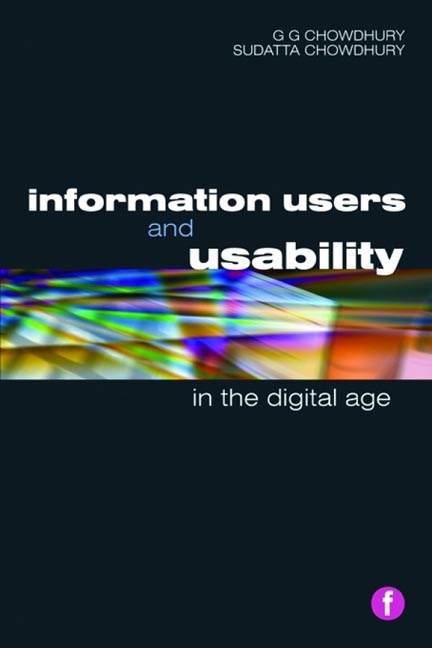Book contents
- Frontmatter
- Contents
- Preface
- Figures and tables
- 1 Introduction
- 2 Information needs and user studies
- 3 Human information behaviour studies and models
- 4 Usability study basics
- 5 Usability study participants
- 6 Usability data analysis
- 7 Web usability
- 8 The usability of digital libraries
- 9 The digital divide, digital natives and usability
- 10 Issues and trends in usability research
- Index
1 - Introduction
Published online by Cambridge University Press: 09 June 2018
- Frontmatter
- Contents
- Preface
- Figures and tables
- 1 Introduction
- 2 Information needs and user studies
- 3 Human information behaviour studies and models
- 4 Usability study basics
- 5 Usability study participants
- 6 Usability data analysis
- 7 Web usability
- 8 The usability of digital libraries
- 9 The digital divide, digital natives and usability
- 10 Issues and trends in usability research
- Index
Summary
The main goal of an information service is to meet the user requirements for finding and accessing relevant information. In other words, users are, or at least should be, at the centre of any information service irrespective of whether it is free or fee‑based, local or remote. Prompted by the introduction of computers in information processing in the late 1950s, a large variety of online databases and information search services began to be marketed in the 1960s. The rate of growth of local and remote online information services has increased significantly with the appearance and proliferation of the internet and the world wide web some two decades ago. Information services now play a major part in almost all our day‑to‑day activities in today's society.
However, information services existed long before the invention of computers. Traditionally, libraries provided information services, and libraries have existed for centuries. Users, and ease of use of information, were the two major driving forces behind these services. The importance of users in the context of library and information services was acknowledged by Ranganathan (1963) in his famous Five Laws of Librarianship in the 1930s:
• Books are for use.
• Every reader his book.
• Every book its reader.
• Save the time of the reader.
• A library is a growing organism.
It may be noted that although Ranganathan conceived these laws nearly a century ago in the context of libraries, they are very much applicable in today's electronic information world where one can easily reword these laws to state:
• Information is for use.
• Every user her [piece of] information.
• Every [piece of] information its user.
• Save the time of the user.
• Information is a growing organism.
In other words, while creating and/or managing an information service, we should always keep users in mind so that every bit of information stored within the system is accessible by its target users, and as a corollary users of the information system or service should find the information they require efficiently and effectively.
- Type
- Chapter
- Information
- Information Users and Usability in the Digital Age , pp. 1 - 24Publisher: FacetPrint publication year: 2011



